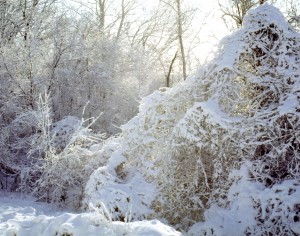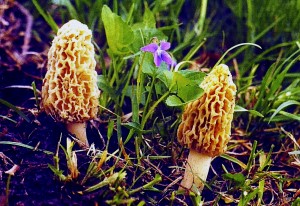By Kenneth L. Kieser
Northeast News
March 6, 2012

Winter is a rough time! Cold winds drive up heating bills and cabin fever becomes a reality. My father always said, “You endure a bad winter to be rewarded by a beautiful spring.” This is especially true for wildlife.
Thankfully, March is the gateway to spring. Let’s take a look at how several species survive this roughest part of winter and how they will fare this spring:
January and part of February makes wildlife survival a challenge. Larger animals like deer dig through ice and snow with their hooves to find meager tidbits. Coyotes, foxes and birds of prey are rewarded with small game that has few places to hide. Rabbits, rodents and quail with the best cover and food sources probably will make it. Many will not. They have a low survival percentage and generally a good reproduction rate. Let’s take a closer look at other species:
FISH – Fish survival depends on amounts of oxygen that filters through the ice. Snow lying for long periods on a shallow frozen pond is disastrous. Sun penetrating through the ice helps create oxygen that is badly needed for fish survival. Fish in deeper pools have a greater chance of survival.
BOBWHITE QUAIL – “Bobwhite quail will change habitat a lot every winter,” said Elsa Gallhager, upland wildlife coordinator. “They spend more time near shrub-type cover with bare ground underneath or cornfields when available. They will likely stay in coveys around their chosen habitat until April. Then they will split up in pairs to breed.”
However, quail pair up early during unseasonably warm March weather. Then they start nesting and may have an early hatch of chicks. Some biologists claim they might nest again while others believe breeding is once each spring.
A wet spring is devastating to quail. Nests may be washed out and young birds catch hypothermia or pneumonia. Predators like black snakes, foxes, coyotes or even house cats take their share of baby quail that are about the size of a bumblebee.
OTHER BIRDS – “A certain group are permanent residents here like chick-a-dees and nuthatches,” said Brad Jacobs, ornithologist. “We will see different species migrating into this area as spring progresses. Geese and swans have already moved into this area and stayed while some pushed on through. But ducks will soon be arriving. They will move north when open water is present.”
March is considered the time for short-distance migrants who are generally seedeaters. Robins, field sparrows and other species that winter in the southern United States move north, eventually passing through our area.
Long-distance migrants that mainly eat insects start moving in from the tropics. This might include warblers, fly catchers and orioles. Hummingbirds follow the same pattern. Long distance species will nest in May. They generally stay in the northern states two to three months before returning south.
Great horned owls, bluebirds, red tailed hawks and species that build nests inside tree cavities or boxes will likely start nesting in late February and March. Some may be in open nests, braving the weather. Babies stay under their parents for warmth. But an extra layer of fat also insulates younger birds, especially birds that are eating well.
WILD TURKEYS – Wild turkeys fare well in the worst conditions by finding food while digging through snow, ice and mud with their sharp claws. Adult birds provide quite a fight against most predators with their strong wings and sharp spurs. Yet, folks who walk through woodlots will occasionally find a pile of feathers that belonged to the turkey that lost a violent fight.
You can still see big flocks of hens and young birds feeding in open row crop fields. Toms occasionally join them. However, toms always roost in different locations than hens or young birds. You can tell a turkey roost by droppings under a tree. The ground will be splashed white. Tom dropping are J-shaped, harder to see and not quite as messy.
Toms and hens will eventually separate into smaller groups for their spring ritual of breeding and then nesting. Most toms are in bachelor groups. This group of four or five toms spends a great deal of time establishing dominance or their pecking order. Generally, an old long bearded gobbler will be the dominant bird that does most of the breeding.
Throughout April the toms start gobbling to answer hens clucking, yelping or purring. Toms, in fact, gobble at most loud noises during this sensitive period. They consider themselves kings of the timber in April.
Bred hens go to nests from middle April to the middle of May and toms are left to find other hens or to feed and rest. Soon the chicks will be running around and gobblers return to their bachelor groups for some peace and quiet.
TREES – Spring has a magic effect on trees. During fall the sap retreats to the trunk. A limb laden with sap would easily break with the added weight of ice and snow. During spring the sap returns to feed the growth of leaves or fruit.
Spring will soon be here!

















